Amphibians can be fascinating, low-maintenance pets that provide a unique window into the natural world. These remarkable creatures, with their dual lives in water and on land, captivate both children and adults alike with their interesting behaviors and sometimes stunning colors. If you’re considering bringing an amphibian into your home for the first time, it’s important to choose a species that’s suitable for beginners. This article explores 13 amphibian species that are known for their hardiness, reasonable care requirements, and suitability for novice owners, helping you make an informed decision about which might best fit your lifestyle and interests.
Fire-Bellied Toads

Fire-bellied toads (Bombina species) are among the most popular amphibian pets for beginners, and for good reason. These small toads feature a striking combination of green or brown backs with bright red or orange undersides—a warning coloration that signals their mild toxicity in the wild. Don’t worry though; proper handling practices (washing hands before and after handling) make them perfectly safe pets. These semi-aquatic creatures thrive in tanks with both land and water areas, called paludariums. They’re relatively active during daylight hours, making them more entertaining to observe than nocturnal species. Fire-bellied toads typically live 10-15 years with proper care, eat readily available crickets and other small insects, and don’t require complex temperature or humidity control beyond what a basic setup provides.
African Dwarf Frogs
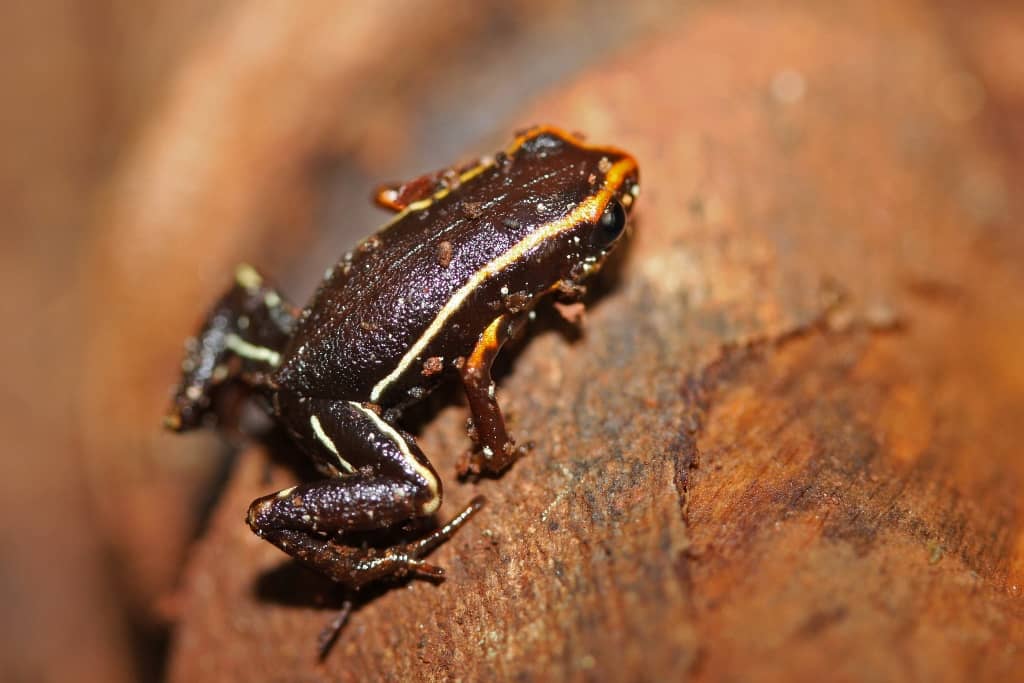
African dwarf frogs (Hymenochirus boettgeri) are fully aquatic amphibians that make excellent starter pets. Growing to just 1-2 inches long, these tiny frogs can live in a properly filtered aquarium of at least 5 gallons. Their minimal space requirements and charming behaviors—like their “zen” floating position and occasional “dancing”—make them popular among apartment dwellers and children. African dwarf frogs are completely aquatic throughout their life cycle, eliminating the need for land areas in their habitat. They thrive on a diet of specialized frog pellets supplemented with frozen bloodworms or brine shrimp. With a lifespan of 5-10 years and minimal care requirements beyond clean water and regular feeding, these peaceful amphibians are perfect for beginners looking for an unusual aquatic pet that doesn’t demand the attention of more traditional options.
White’s Tree Frogs
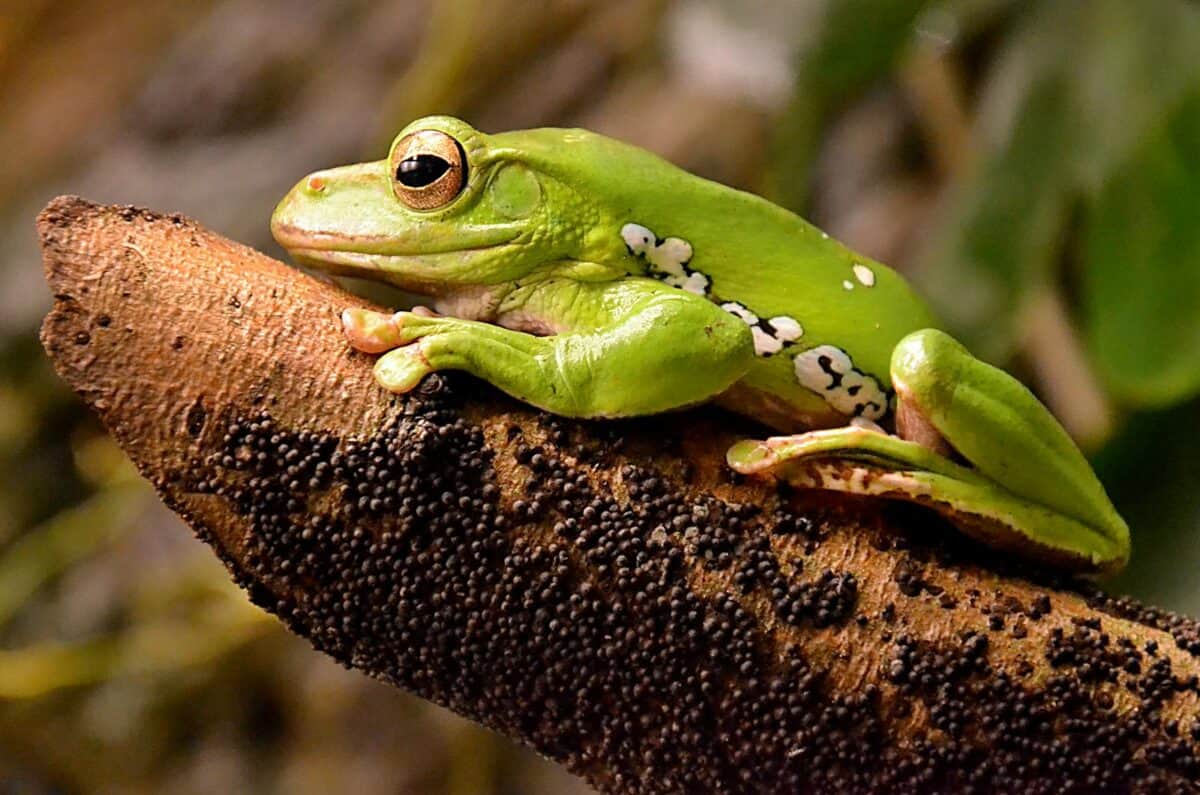
White’s tree frogs (Litoria caerulea), also known as dumpy tree frogs or Australian green tree frogs, are among the most personable amphibian pets available. These charming frogs have a distinctive, almost comical appearance with their pudgy bodies, sleepy-looking eyes, and a perpetual “smile.” Growing to 3-4 inches in length, they’re substantial enough to handle occasionally (with moistened hands) but not overwhelming for new keepers. White’s tree frogs are remarkably hardy, tolerating temperature and humidity fluctuations better than many other tree frog species. Their docile temperament and willingness to eat a variety of insects make them low-maintenance companions. These frogs are primarily nocturnal but will often emerge during the day, especially at feeding time. With proper care, including a vertical terrarium with climbing branches, moderate humidity, and a regular diet, White’s tree frogs can live 15-20 years, making them long-term companions for dedicated owners.
American Green Tree Frogs

American green tree frogs (Hyla cinerea) are slender, vibrant amphibians native to the southeastern United States that make excellent beginner pets. Typically reaching only 1-2.5 inches in length, these small frogs require less space than many other species, doing well in 10-20 gallon vertical terrariums. Their brilliant green coloration, which can change slightly based on temperature and environment, makes them visually appealing additions to any home. American green tree frogs are relatively active in the evening hours and have a distinctive chirping call that most owners find pleasant rather than disruptive. They’re undemanding in their care requirements, needing only moderate humidity, simple branch arrangements for climbing, and a diet of appropriately sized crickets and other small insects. With a lifespan of 5-8 years in captivity, they provide a manageable commitment for first-time amphibian keepers while still offering years of enjoyment.
Pacman Frogs

Pacman frogs (Ceratophrys species) are among the most distinctive and undemanding amphibians in the pet trade. Named for their round shape and enormous mouths that resemble the iconic video game character, these frogs are essentially living sculptures that require minimal care. Unlike more active species, Pacman frogs spend much of their time partially buried in substrate, patiently waiting for food to come within striking distance. This sedentary lifestyle makes them perfect for beginners who want an unusual pet but don’t necessarily need one that displays complex behaviors. Available in several color variations including albino, green, and brown phases, these ambush predators grow to 4-7 inches in diameter depending on the species. Their care is straightforward—they need a simple terrestrial setup with deep substrate for burrowing, a water dish, appropriate temperature (75-85°F), and feedings of appropriately sized crickets, roaches, or even small mice for adult specimens. With lifespans reaching 10-15 years, Pacman frogs offer long-term companionship with minimal effort.
Oriental Fire-Bellied Toads

Oriental fire-bellied toads (Bombina orientalis) are the most commonly available variety of fire-bellied toads and deserve special mention for their exceptional hardiness and vibrant appearance. Native to northeastern China, Korea, and parts of Russia, these small amphibians (typically 1.5-2 inches) feature a warty green and black dorsal pattern that provides excellent camouflage in their natural environment. When threatened, they reveal their brilliant red-orange undersides as a warning display—a behavior they sometimes exhibit in captivity when startled. Oriental fire-bellied toads are relatively active during daylight hours, often seen swimming, floating in water, or perching on land areas. Their semi-aquatic lifestyle requires a tank split approximately 50/50 between water and land. These sociable creatures do well in small groups of 3-5 specimens, creating a dynamic display as they interact with tankmates. They adapt readily to captivity, accept a variety of insect prey, and can tolerate a wider temperature range (65-78°F) than many other amphibians, making them exceptionally forgiving for beginners.
Axolotls

Axolotls (Ambystoma mexicanum) are fully aquatic salamanders that have exploded in popularity due to their unique appearance and fascinating biological characteristics. Unlike most amphibians, axolotls exhibit neoteny, meaning they retain juvenile characteristics, including their external gills, throughout their lives. These striking creatures come in several color morphs, including wild-type (dark with speckling), leucistic (pale with dark eyes), albino, and melanoid (black). Axolotls require a different approach to care than other amphibians on this list; they need a water-only aquarium with minimal decor, excellent filtration with gentle flow, and cool water temperatures between 60-68°F. This temperature requirement often means aquarium chillers are necessary in warmer climates. They’re carnivores that readily accept sinking pellets, nightcrawlers, and other aquatic foods. Perhaps most remarkably, axolotls possess extraordinary regenerative abilities, capable of regrowing limbs, parts of vital organs, and even portions of their brains. With proper care, including pristine water conditions, appropriate diet, and cool temperatures, these unique salamanders can live 10-15 years, making them wonderful long-term aquatic companions.
Eastern Newts

Eastern newts (Notophthalmus viridescens) offer beginners a unique opportunity to observe one of nature’s most dramatic life transformations. These North American natives have a fascinating three-stage life cycle: they begin as aquatic larvae, transform into a terrestrial juvenile stage called a red eft (bright orange-red with red spots), and eventually return to water as olive-green adults with a yellow-spotted pattern. In captivity, most pet eastern newts are acquired in their adult aquatic form, requiring a setup similar to that of aquatic frogs, but with easier access to land areas for occasional exploration. These small salamanders, reaching 3-5 inches in length, are hardy and adaptable, tolerating a range of water conditions better than many amphibians. They accept a varied diet including bloodworms, brine shrimp, small insects, and commercial newt pellets. Eastern newts are active during daylight hours and exhibit interesting behaviors like courtship displays during breeding season. With a potential lifespan of 12-15 years in captivity, these engaging creatures offer long-term companionship and educational value for patient observers.
Tiger Salamanders
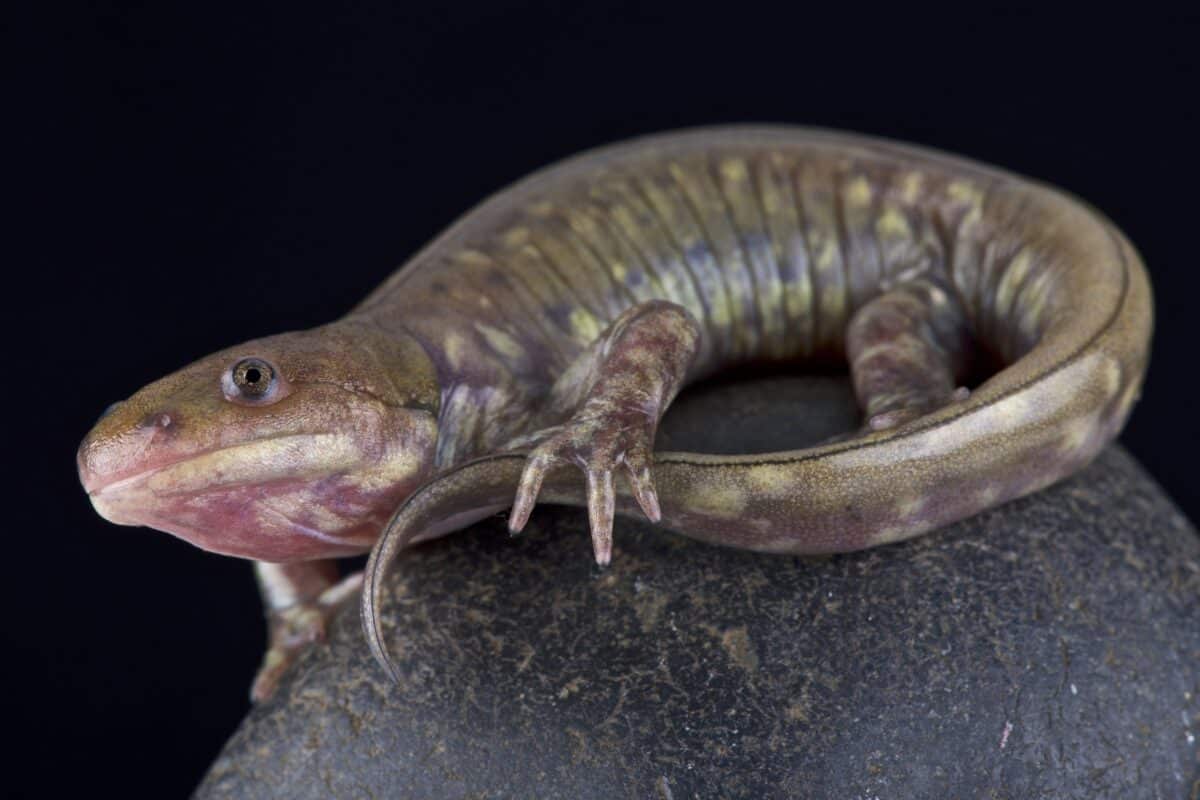
Tiger salamanders (Ambystoma tigrinum) are robust, terrestrial amphibians that make excellent pets for beginners ready to care for a larger, longer-lived species. These salamanders are among the largest land-dwelling salamanders in North America, growing to an impressive 7-8 inches in length. Their name comes from their distinctive patterning—typically black or dark brown with yellow or olive spots or stripes, though coloration varies widely. Unlike many amphibians that require high humidity, tiger salamanders do well in moderately moist environments with deep substrate for burrowing. They’re primarily nocturnal but will often emerge during feeding time, eagerly accepting a diet of nightcrawlers, crickets, and occasionally small pinkie mice. Tiger salamanders are known for their longevity, frequently living 15-25 years in captivity with proper care. Their straightforward requirements—a secure 20-gallon or larger terrestrial terrarium, appropriate temperature range (65-70°F), hiding spots, and regular feeding—make them suitable for committed beginners willing to provide decades of care for these fascinating, prehistoric-looking creatures.
Spotted Salamanders
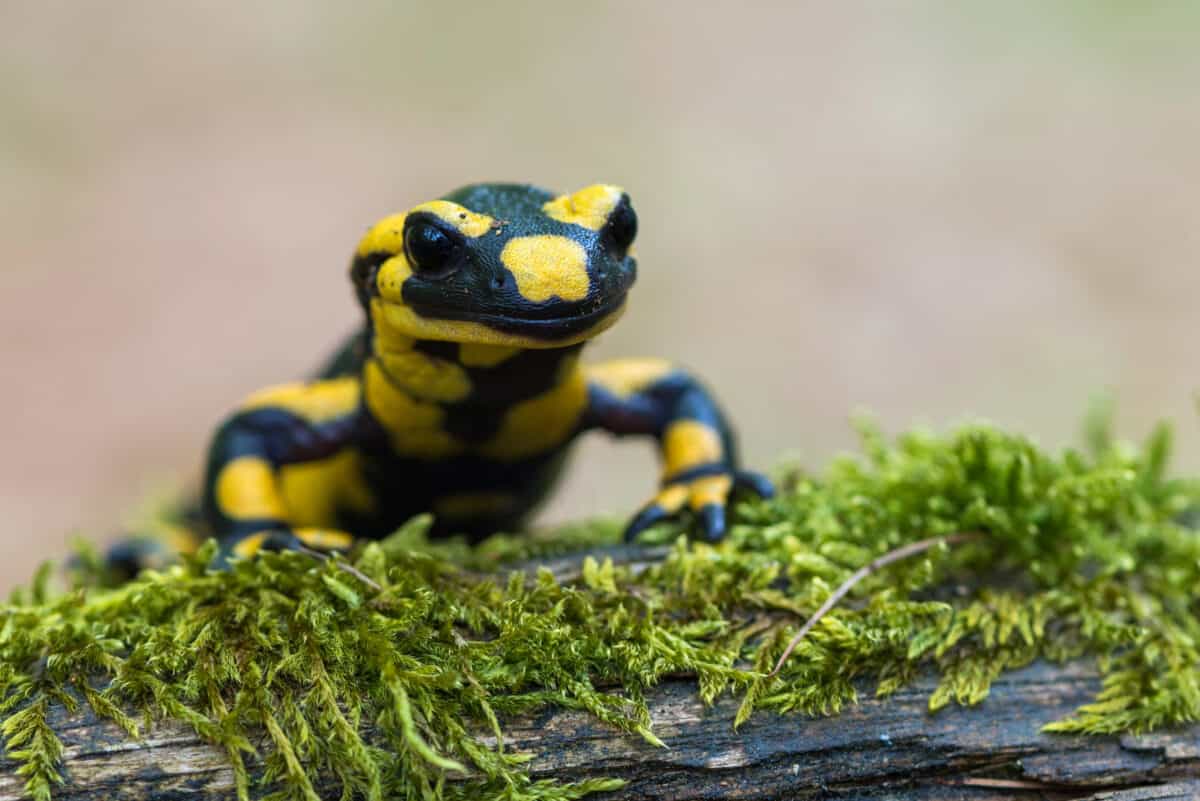
Spotted salamanders (Ambystoma maculatum) offer beginners an opportunity to keep one of North America’s most visually striking native amphibians. These substantial salamanders, growing to 6-9 inches in length, feature a glossy black or dark blue-black body adorned with distinct yellow or orange spots—a warning coloration advertising their mild toxicity in the wild (though they’re perfectly safe as pets with proper handling practices). Spotted salamanders are primarily terrestrial as adults, requiring a simple setup with deep, moist substrate for burrowing, hiding spots like cork bark or small caves, and a shallow water dish. They’re almost entirely nocturnal, spending daylight hours concealed in burrows and emerging at night to hunt for food. While their secretive nature means they’re not always visible, this also translates to low-maintenance care; they’re content with a stable environment and regular feedings of nightcrawlers, crickets, and other appropriately sized insects. With proper care, including clean conditions, appropriate humidity, and temperatures between 65-70°F, spotted salamanders can live 20+ years in captivity, making them wonderful long-term companions for patient keepers.
Yellow-Bellied Toads
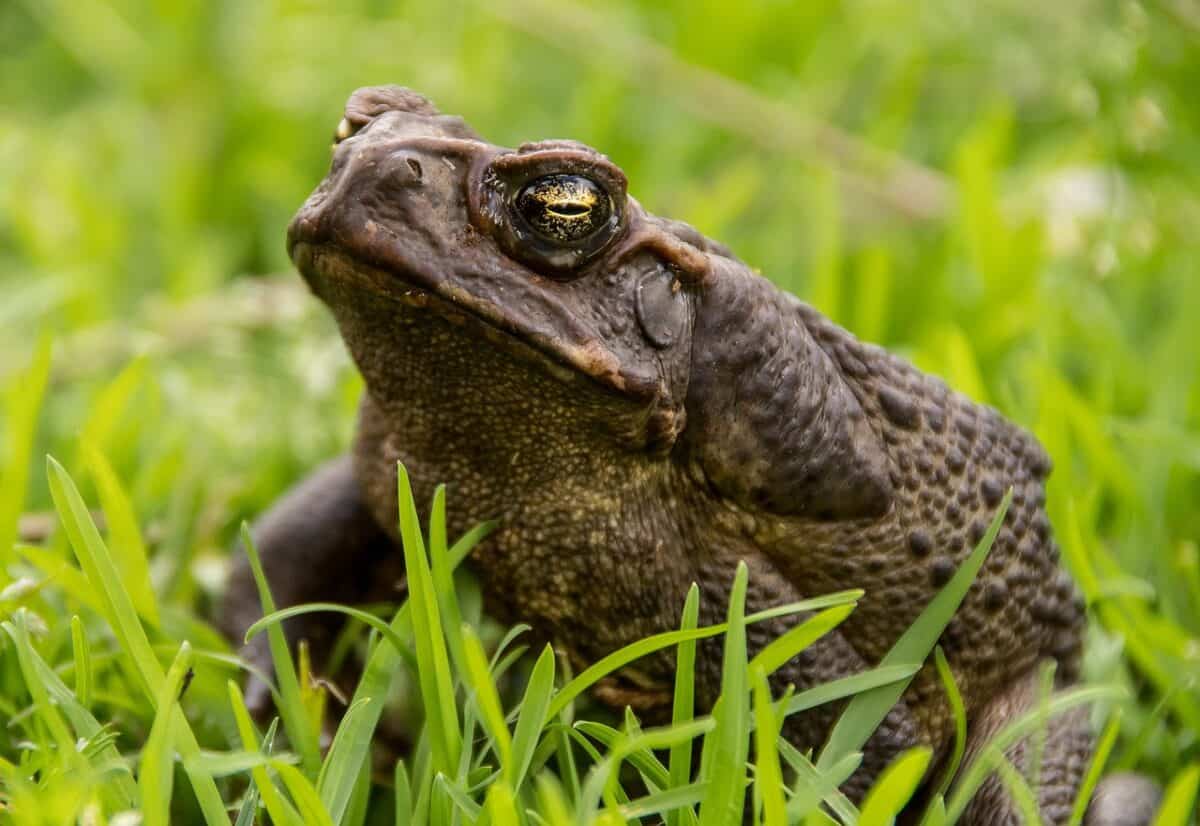
Yellow-bellied toads (Bombina variegata) are close relatives of the fire-bellied toads but deserve separate consideration for their unique characteristics and care requirements. As their name suggests, these small amphibians (typically 1.5-2 inches) display vibrant yellow to orange undersides with dark mottling—a warning coloration they flash when threatened. Their dorsal surfaces are typically brownish with a warty texture, providing excellent camouflage. Native to central and southern Europe, yellow-bellied toads inhabit shallow, temporary water bodies in the wild, making them exceptionally adaptable to captive conditions. They require a semi-aquatic setup with plenty of shallow water areas and multiple land spots at varying heights. Yellow-bellied toads are diurnal (active during daylight) and highly aquatic, spending much of their time swimming or floating in water with their distinctive spread-eagled posture. They readily accept small insects, including crickets, fruit flies, and small worms. These toads are notably hardier regarding temperature than many amphibians, thriving in room temperature environments (65-75°F). With relatively simple care requirements and a lifespan of 10-15 years, yellow-bellied toads make excellent, long-lived pets for beginner amphibian enthusiasts.
Bumble Bee Walking Toads

Bumble bee walking toads (Melanophryniscus stelzneri) are diminutive jewels in the amphibian world that make charming pets for space-conscious beginners. These tiny toads, rarely exceeding 1-1.5 inches in length, display a striking contrast between their black bodies and bright yellow or orange patches—a warning coloration reminiscent of the bees they’re named after. Native to Argentina, these terrestrial toads have adapted to a relatively dry environment compared to many amphibians, requiring only moderate humidity rather than constant moisture. Their common name “walking toads” comes from their preference for walking rather than hopping, giving them a distinctive, almost deliberate movement pattern that’s endearing to observe. Bumble bee walking toads thrive in simple terrariums with coconut fiber substrate, hiding spots, a shallow water dish, and moderate humidity maintained through occasional misting. They accept small insects like fruit flies, pinhead crickets, and tiny worms, making feeding straightforward. While these toads don’t require complex care, their small size means they should be observed rather than handled. With proper care, including appropriate temperature (70-78°F) and diet, bumble bee walking toads can live 5-10 years in captivity.
Rough-Skinned Newts

Rough-skinned newts (Taricha granulosa) are fascinating native North American salamanders that make surprisingly hardy pets for beginners interested in aquatic amphibians. These distinctive newts are characterized by their orange-brown to dark brown dorsal surfaces, bright orange-yellow ventral (belly) coloration, and—as their name suggests—rough, almost warty skin texture. In the wild, rough-skinned newts produce a powerful neurotoxin called tetrodotoxin as a defense mechanism, but captive-bred specimens and those that have been in captivity for extended periods pose minimal risk with proper handling protocols (thorough hand washing and avoiding touching your face). These newts are primarily aquatic as adults, requiring a tank with clean water, simple filtration, and easy access to land areas. They thrive in cool water temperatures (55-68°F), making them ideal for keepers in temperate climates who might struggle with the heating requirements of tropical species. Rough-skinned newts accept a variety of foods, including bloodworms, brine shrimp, small earthworms, and specialized salamander pellets. With their straightforward care requirements, interesting behaviors including unique swimming patterns, and a potential lifespan of 12-15 years, these newts make rewarding companions for careful beginners.
Conclusion: Finding Your Perfect Amphibian Companion

Selecting the right amphibian pet as a beginner is about finding the balance between your interests and the level of care you can provide. Each of the 13 species discussed offers unique advantages, from the vibrant warning colors of fire-bellied toads to the prehistoric charm of axolotls. Before bringing any amphibian home, research specific care requirements, set up their habitat in advance, and connect with reputable breeders or pet stores that provide healthy, captive-bred specimens. Remember that while these species are considered beginner-friendly, all living creatures require commitment to proper care, regular maintenance, and attention to their specific environmental needs. With the right preparation and expectations, an amphibian pet can provide years of fascination, education, and enjoyment as you observe the remarkable adaptations that have allowed these unique creatures to thrive for millions of years across two distinct worlds—water and land.
- 10 Animals That Risked Their Lives to Save Humans - August 9, 2025
- 14 Reasons Why Bears Are Afraid of Humans (Most of the Time) - August 9, 2025
- 11 Frogs That Look Too Weird to Be Real - August 9, 2025

